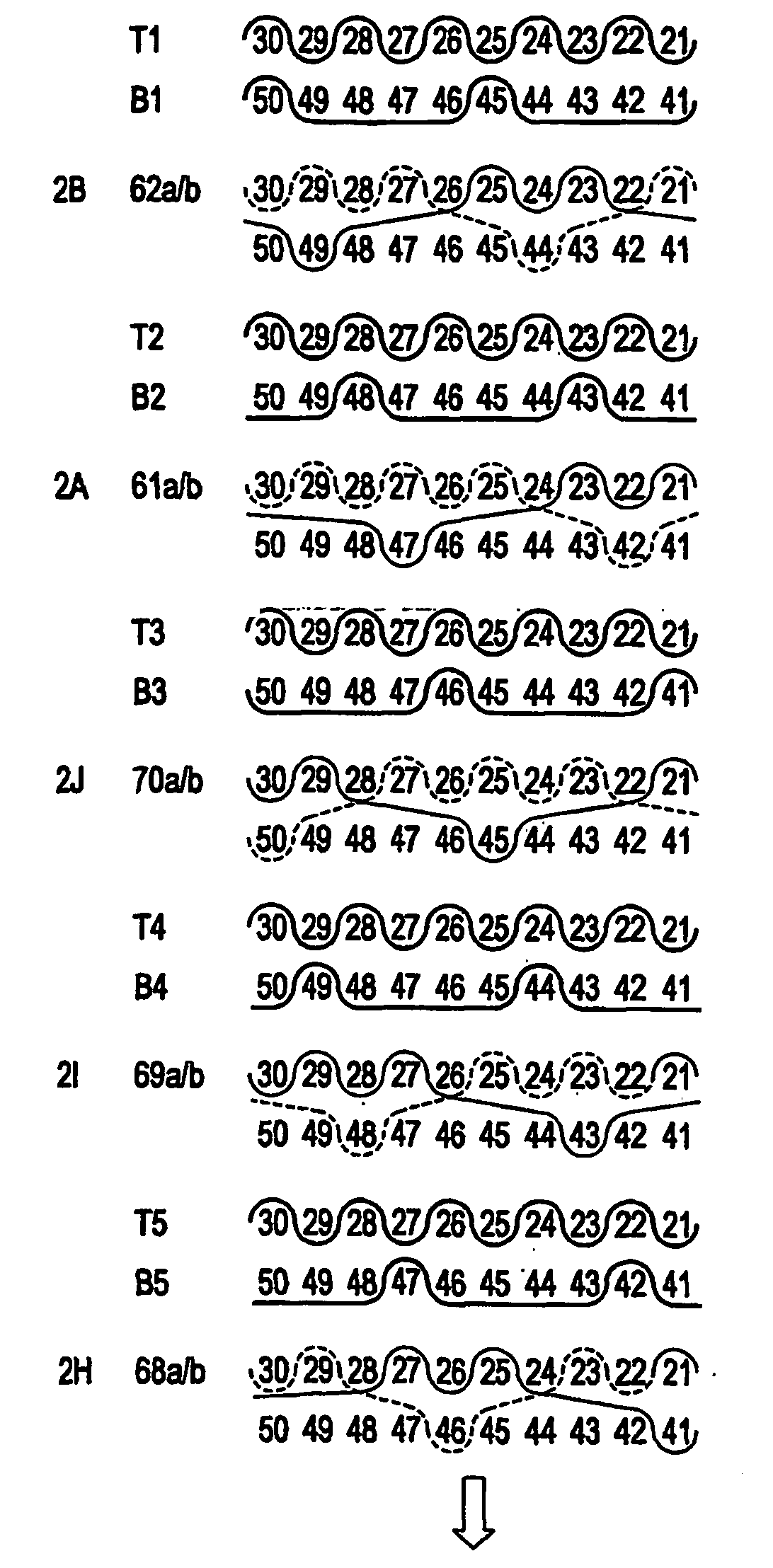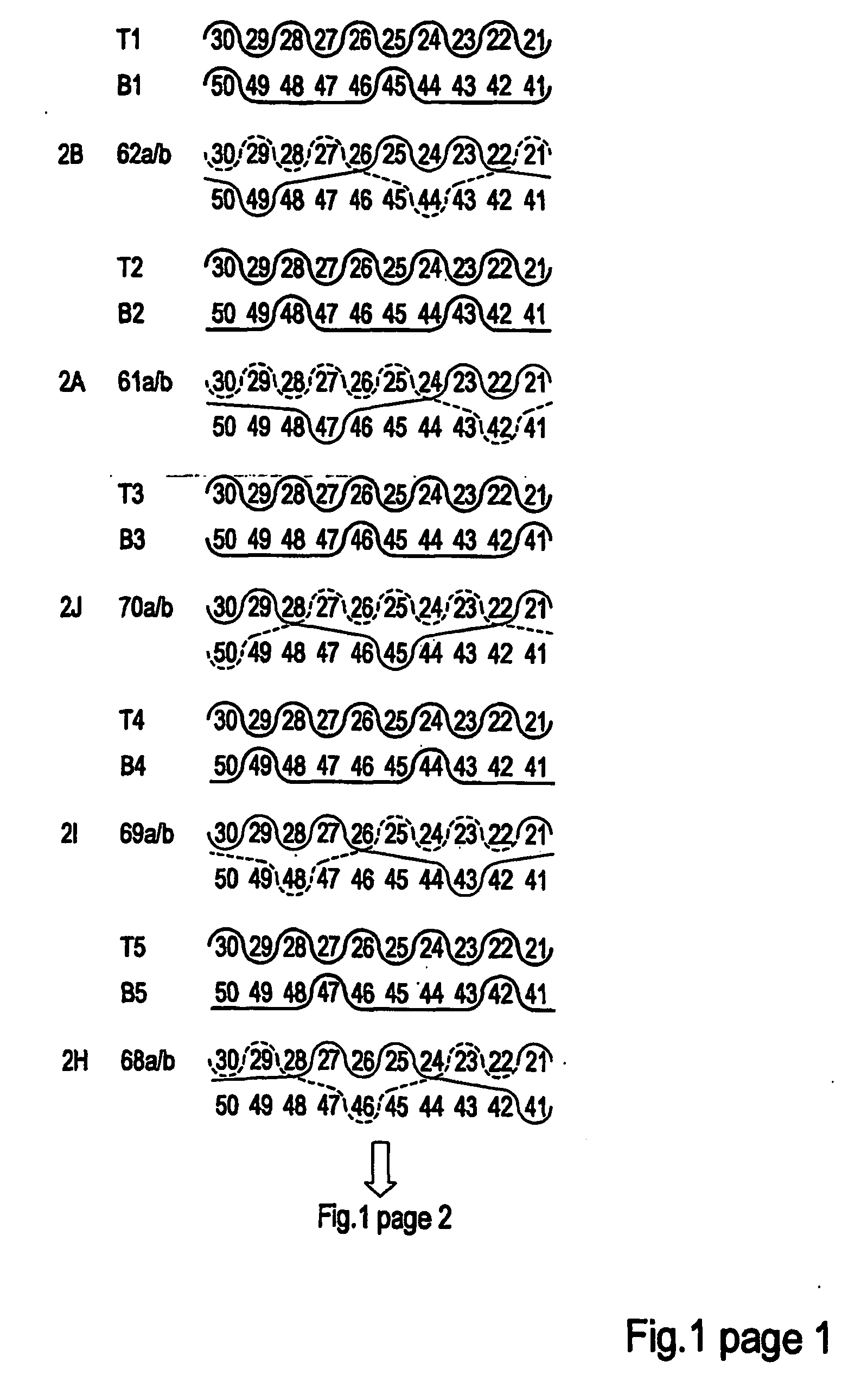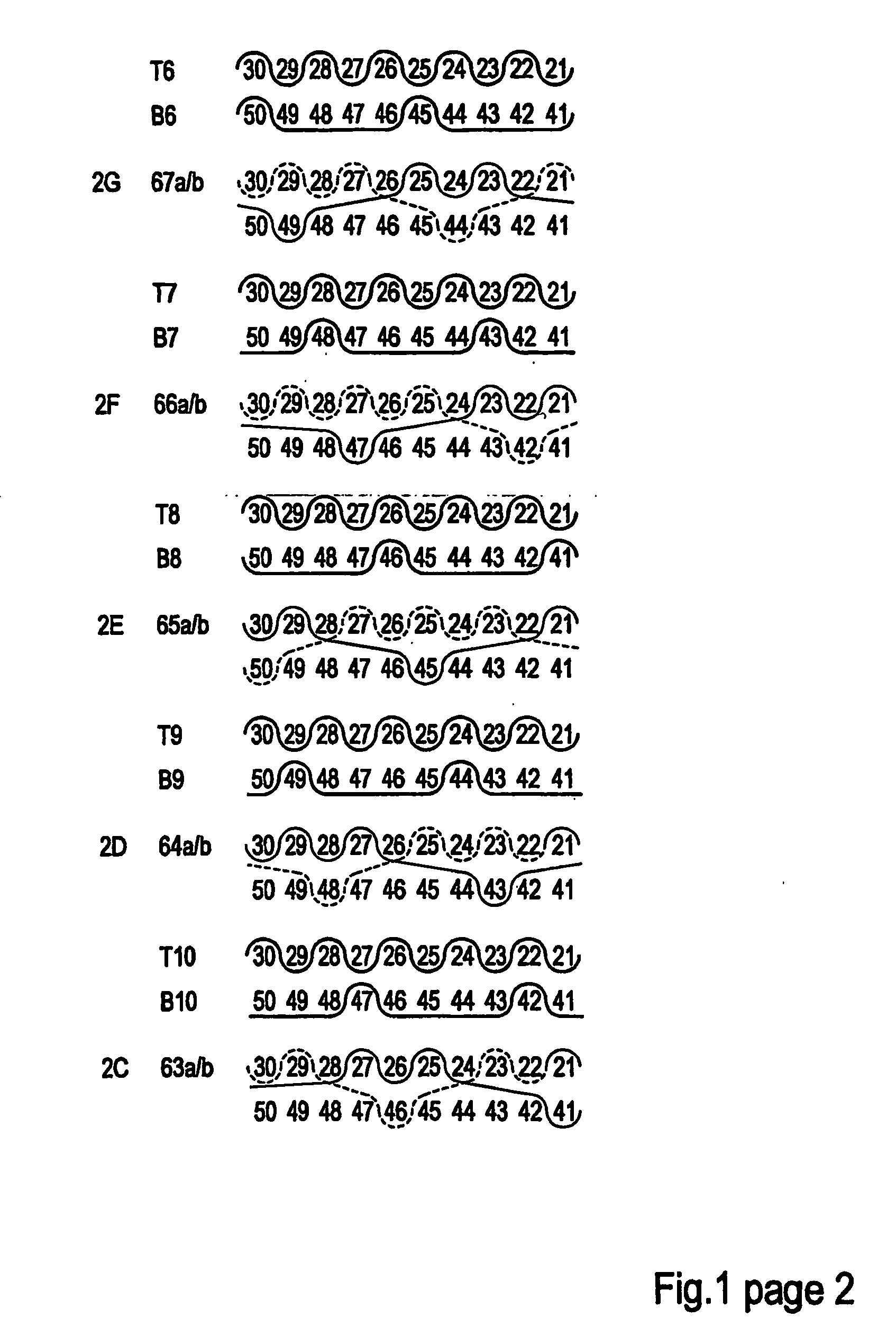High Shaft Forming Fabrics
a technology of high shaft and fabric, applied in the field of fabrics, can solve the problems of undesired variations in sheet absorption properties, wire marks, and undesired wire marks
- Summary
- Abstract
- Description
- Claims
- Application Information
AI Technical Summary
Benefits of technology
Problems solved by technology
Method used
Image
Examples
first embodiment
[0121]Referring to FIG. 2, a fabric in accordance with this invention is illustrated at 20; showing a single full fabric weave repeat and comprising 14 paper side wefts (T1, T2, T3 . . . T14), 14 wear side wefts (B1, B2, B3 . . . B14), and 14 pairs of interchanging, binder weft yarns (I1 / 2, I3 / 4, I5 / 6 . . . I27 / 28).
[0122]The fabric 20 has a twenty (28) shaft repeat, including a fourteen (14) warp top layer (1, 3, 5, . . . 27) having a paper side surface within each repeat, a fourteen (14) warp machine side layer (2, 4, 6, . . . 28) having a bottom wear side surface within each repeat and a plurality of pairs of first and second intrinsic interchanging weft binder yarns (I1 / 2 through I27 / 28).
[0123]As illustrated in the weft path weave patterns depicted in FIG. 2, the top layer includes top warp yarns 1, 3, 5 . . . 27 within each repeat interwoven with top, i.e., paper side, weft yarns T1, T2 . . . T14 and top segments of the interlacing binder pairs I1 / 2, I3 / 4, I5 / 6 . . . I27 / 28 to f...
second embodiment
[0137]Referring to FIG. 3, a fabric in accordance with this invention is illustrated at 30; showing the full weave paths for all paper side wefts (T1, T2, T3 . . . T14), wear side wefts (B1, B2, B3 . . . B14), and interchanging binder weft pairs (I1 / 2, I3 / 4, I5 / 6 . . . I27 / 28). As will be discussed in detail hereinafter, except for the arrangement of the interchanging binder pairs, the fabric 30 is the same as the fabric 20.
[0138]Specifically the fabric 30, like the fabric 20, has a twenty-eight (28) shaft repeat, including a fourteen (14) warp top layer (1, 3, 5, . . . 27) having a paper side surface within each repeat, a fourteen (14) warp machine side layer (2, 4, 6, . . . 28) having a bottom wear side surface within each repeat and a plurality of pairs of first and second intrinsic interchanging weft binder yarns (I1 / 2 through I27 / 28).
[0139]As illustrated in the weft path weave patterns depicted in FIG. 3, the top layer includes top warp yarns 1, 3, 5 . . . 27 within each repeat...
third embodiment
[0153]Referring to FIG. 4, a fabric in accordance with this invention is a 28 shaft repeat and is illustrated at 40; showing the full weave paths for all paper side wefts (T1, T2, T3 . . . T14), wear side wefts (B1, B2, B3 . . . B14), and interchanging binder weft pairs (I1 / 2, I3 / 4, I5 / 6 . . . I27 / 28). As will be discussed in detail hereinafter, except for the arrangement of the interchanging binder pairs, the fabric 40 is the same as the fabrics 20 and 30.
[0154]Specifically the fabric 40, like the fabrics 20 and 30, has a twenty eight (28) shaft repeat, including a fourteen (14) warp top layer (1, 3, 5, . . . 27) having a paper side surface within each repeat, a fourteen (14) warp machine side layer (2, 4, 6, . . . 28) having a bottom wear side surface within each repeat and a plurality of pairs of first and second intrinsic interchanging weft binder yarns (I1 / 2 through I27 / 28).
[0155]As illustrated In the weft path weave patterns depicted in FIG. 4, the top layer includes top warp ...
PUM
| Property | Measurement | Unit |
|---|---|---|
| length | aaaaa | aaaaa |
| weight ratio | aaaaa | aaaaa |
| height | aaaaa | aaaaa |
Abstract
Description
Claims
Application Information
 Login to View More
Login to View More - R&D
- Intellectual Property
- Life Sciences
- Materials
- Tech Scout
- Unparalleled Data Quality
- Higher Quality Content
- 60% Fewer Hallucinations
Browse by: Latest US Patents, China's latest patents, Technical Efficacy Thesaurus, Application Domain, Technology Topic, Popular Technical Reports.
© 2025 PatSnap. All rights reserved.Legal|Privacy policy|Modern Slavery Act Transparency Statement|Sitemap|About US| Contact US: help@patsnap.com



